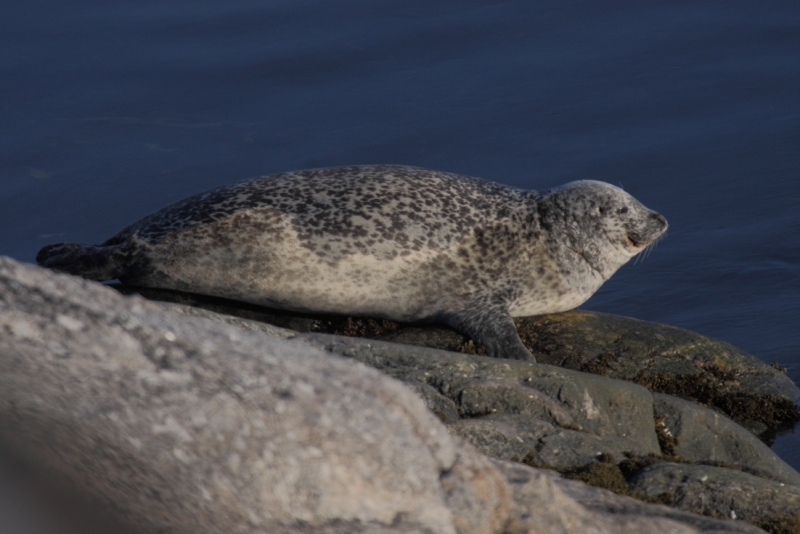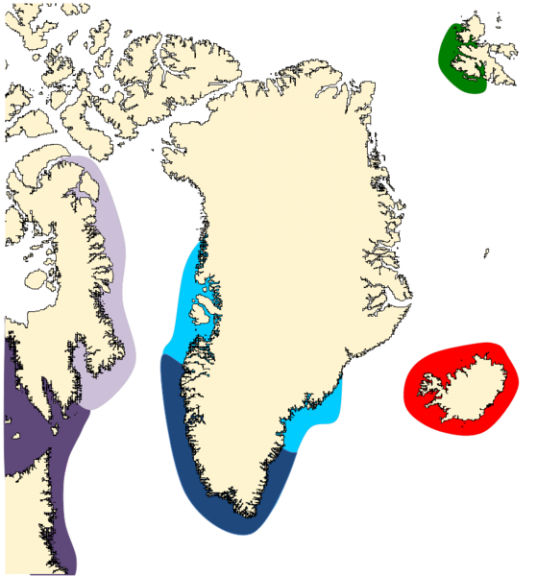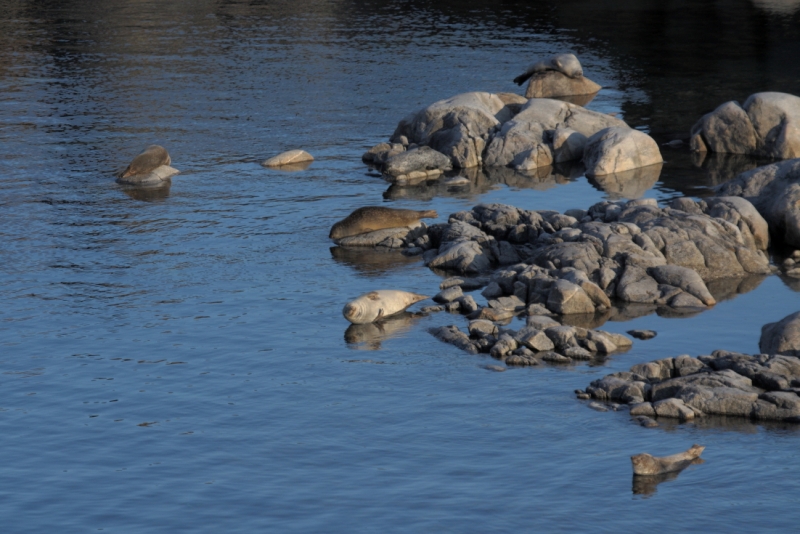Harbour seal
(a.k.a Common seal)

The common seal is more dependent than the other Greenlandic seal species on going on land. Photo: Aqqalu Rosing-Asvid
Phoca vitulina
Size and appearance
There is considerable variation in both colouration and body size in different populations of common seals. Males are generally slightly larger than females and can in some populations be up to 1.90 metres (from snout to tip of tail), while those in other populations, e.g. on Svalbard, only grow to about 1.50 metres. In Greenland, only a few harbour seals have been measured, among them a male of 1.78m caught near Nuuk. 10 adult harbour seals have been measured in the Cape Farewell area in South Greenland and here the biggest one was a male 1.60cm long.
Food
The harbour seal’s diet consists mainly of fish. It is believed that char is an important food in the summer in some areas. In the Cape Farewell area, however, harbour seals mostly forage in areas and at depths where there are hardly any concentrations of char.
Reproduction
There are no studies that clearly define at what point in time the harbour seal gives birth in Greenland, but individual observations and various information from the literature indicate that births occur from late May to early July, with most births in June. Birth and suckling takes place on land and usually the same localities are used by the seals year after year.
Moulting
The moulting time varies widely between different populations. Habour seals frequently gather together and spend a large part of the day lying on land and basking during the moulting period. Studies in the inner parts of Kangerlussuaq (from August-October 1995-97) showed that the highest number of seals on land (which is probably related to the time when most seals moult) was from 10-26 August.. In the Cape Farewell area most harbour seals reach the last phase of moulting (only some loose hair) in early September.
Distribution and numbers

Distribution of common seals in and near Greenland.
The harbour seal is mainly prevalent in temperate waters, i.e. south of the Arctic. There are 4-5 subspecies of harbour seals which consist of a large number of smaller populations. The harbour seal is found along the coast of both the North Atlantic and the North Pacific and the total world population was in 2009 estimated to be in the order of 610.000-640.000 seals. In Greenland, the main distribution area is the subarctic zone (the waters where cold polar water is mixed with Atlantic water).
The harbour seal has not been very abundant in Greenland at any time during the past century. The reported catch declined from about 200 seals annually in the late 1950s to about 50 seals in the late 1970s. If this relatively modest catch is the main reason for the observed decline, then there can hardly have been more than 3,000 harbour seals in Greenland in the 1950s. If the population had been larger than that, then it would under normal conditions have been able to cope with the pressure from hunting.
As the catches declined after the 1950s the seals also disappeared from most of the known breeding locations. This was probably linked to the hunting and disturbance. New breeding location did, however, also emerge in areas where humans rarely come. The Greenland Institute of Natural Resources know of 5 such locations where small groups of seals (5-40 individuals) regularly gathers, and it is assumed that more of such small units exist and live undiscovered. The now greatly reduced population is, however, not likely to count more than a few hundred seals.
Status
Status on the Greenland Red List is “critically endangered”.
Management
The harbour seal was by 1 December 2010 completely protected against hunting until biological advice indicates that it is again safe to hunt harbour seals in Greenland.
Research
In September 2009 and 2010, 8 and 6 common seals respectively were captured in the Cape Farewell region and had satellite transmitters attached. In 2010, 2 of the 6 captured seals were current year pups and 2 of the 4 older seals were recaptures from 2009.
The seals were very stationary, around a small group of islands and they have only made a few trips out of the Cape Farewell area. The most northern detour on the west coast was up to the settlement of Frederiksdal, while three adult seals in June swam approximately 250 km up along the east coast to Kangeq (Cape Cort Adelaer), where they stayed until July, when they swam back to the small group of islands again. The area they visited “Kangeq” is likely to be the breeding area for these seals. This small population was in 2010 estimated to be around 40 individuals.

Harbour seals spend a large part of the day basking on land, especially during the moult in August-early September.
You can read more HERE

